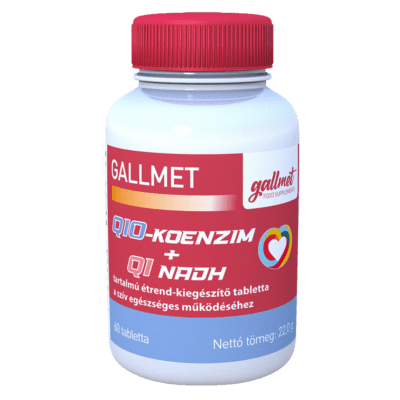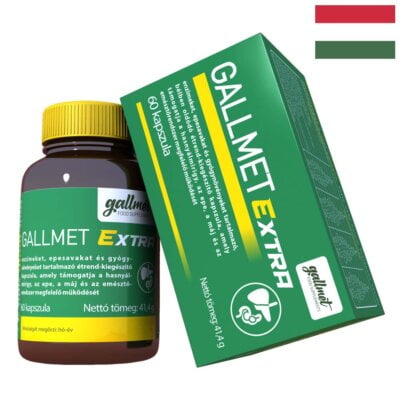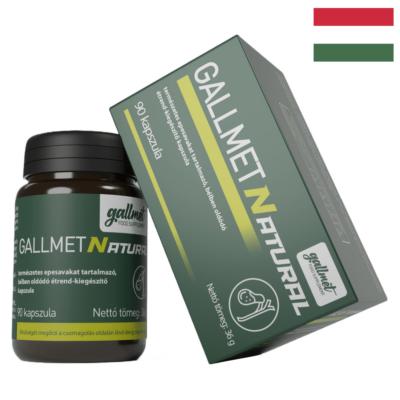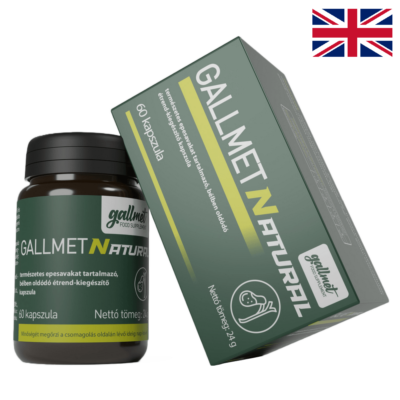Dr. István Tihanyi - Bile acids

Author: Dr. István Tihanyi (chief physician, iridologist, paediatrician, naturopath)
Literature title: Bile acids
Source: https://www.nhs.uk/conditions/gallbladder-removal/
Date of publication: 2014
Download in PDF
Clear and comprehensive information on the role and benefits of bile acids
(Based on an article by Dr. István Tihanyi, but modified and revised)
The liver, gallbladder, duodenum and pancreas interact closely with each other. Their perfectly balanced cooperation is the basis for good digestion.
The sight, smell and even more so the taste of food activates saliva production, prepares the stomach and gallbladder for digestion and speeds up bile production.
If the bile production, bile excretion, and the cycle of bile acids is inappropriate, fat breakdown and digestion will not be balanced, and this can lead to constipation, bloating, malaise and possibly diarrhoea. As bile production, bile circulation and bile secretion can be affected by many factors (nervousness, stress, inflammation, medication, eating disorders, etc.), any of the symptoms listed above can easily develop.
On the other hand, the surgical removal of the gallbladder After this time, your body can no longer store bile, so it keeps flowing into the duodenum. As a result, when there is a greater need for bile (e.g. with higher fat foods), there is not enough bile for balanced digestion. The fats are not emulsified, and when they reach the large intestine, the intestinal flora starts to break them down, causing increased gas formation, abdominal distention and possibly diarrhoea. As you can see, within the digestive system, everything is interconnected. Fortunately, these problems can be positively influenced by the administration of bile acids.
But bile (bile acids) have many other physiologically important roles. I will try to summarise these briefly, without wishing to be exhaustive.
A few words about the properties of bile acids
Bile acids play an important role not only in digestion, i.e. in the emulsification of fats, but also in maintaining the body's immune system. This role physico-chemical defences because bile acids neutralise the highly toxic endotoxins released when fungi and bacteria die.
Having fulfilled their physiological function, bile acids are also converted and then absorbed.
Bile acids are transformed (deconjugation and 7-alpha-dehydroxylation) by bacteria living in the intestinal tract. The primary conjugated (primary) bile acids are converted into secondary (secondary) bile acids. The total bile acid pool of an adult healthy human consists of 20% of secondary bile acids. In the body of a newborn baby, there is essentially no intestinal flora yet, so there are no secondary bile acids. The bile acids are absorbed through the intestinal mucosa and are transported through the portal system with the blood to the liver and then to the liver cells. Only a small proportion diffuses back into the bloodstream. Biotransformation in the liver cells leads to the formation of re-conjugated primary bile acids and then to the restart of entero-hepatic recirculation of bile acids.
An average human body has a total bile acid intake of 2-3 grams, which enters the enterohepatic circulation 5-10 times a day, so 15-30 grams of bile acid per day enter the duodenum. Meanwhile, the body's daily loss of bile acid is only 500 mg, which is mainly excreted in the faeces. In the end, it is only this lost bile acid that the liver needs to reabsorb.
If cholesterol levels rise
Cholesterol is excreted by bile in 2 forms: directly as cholesterol and by being converted into bile acids. Disruption of this mechanism can contribute significantly to obesity, atherosclerosis and, as we have seen, the gallstone formation the development of. The synthesis of bile acids and the rebuilding of bile acids absorbed from the intestinal tract is carried out by the liver. Here, a significant proportion of cholesterol is converted into bile acids. Vitamin C deficiency is also an important risk factor in this process, as vitamin C stimulates the liver enzyme that converts cholesterol into bile acids and inhibits cholesterol synthesis.
The role of optimal bile acid production is of central importance because low bile acid secretion can be a source of many diseases. Their primary role is to help the body get rid of excess and therefore harmful cholesterol. If the liver produces and excretes less bile acid - caused by stagnant bile that is poorly and irregularly excreted - which results from eat less bile-producing food, less bile is produced. This leaves more excess cholesterol in the body, the digestion of fats becomes more imperfect and the resulting absorbed fats raise blood cholesterol and triglyceride levels, deposit in the circulatory system on the walls of blood vessels, narrow their inner lumen and can create catastrophic circulatory and infarct situations. The bile acids and cholesterol that are excreted via bile are passed into the intestine, where most of them are reabsorbed. Thus, cholesterol produced by the liver can also be bound in the intestines. There is evidence that gut bacteria also play an important role in binding cholesterol to faeces. This is why it is important to eat a diet rich in fibre and take probiotics to maintain the gut flora. So it is not the cholesterol intake but the cholesterol produced by the body that is the more important factor. Dietary fats and cholesterol only contribute up to 10% to the deterioration of lab values. There is another vitamin that is a more important factor than diet, nicotinic acid (vitamin PP), because it reduces cholesterol production in the liver.
In the gut some of the bile acids are reabsorbed, thus enabling the absorption of fat-soluble vitamins, allowing the absorption of fat-soluble vitamins. Bile acids, which also circulate in the blood, help to transport the vitamins to their final destination, the cells. Moreover, they allow the vitamins to pass through the cell wall, which has a double layer of fat and protein, to their destination, the cells. Consequently, if there are not enough bile acid molecules in the intestine, i.e. if we do not consume enough bile-secreting foods (e.g. fat, oil), the absorption and utilisation of fat-soluble vitamins (A, D, E, K) is impaired. Therefore, even if we consume sufficient amounts of fat-soluble vitamins, they are not absorbed due to poor utilisation and, despite an apparently adequate supply of vitamins, vitamin deficiencies can develop.
Physico-chemical defences (natural immunity)
Our faeces are made up of 75% water and half and half of the remaining 25% undigested fibres and dead or live bacteria. In the intestines, endotoxins (fatty toxins) are formed as the bacteria die. In the process, the accumulated endotoxin macromolecules are broken down by bile acids into smaller, non-toxic units, so that detoxification in the intestinal tract is largely dependent on bile acids. Max Theiler has shown that bile acids can inactivate even dangerous pathogens such as yellow fever virus, and they also play an important role in the defence against herpes virus infections. The neutralising effect of bile acids on endotoxins, bacteria, fungi and viruses is known as their physico-chemical defence.
Stress
The negative effect of stress on bile production and excretion can be counteracted by bile acids
"Stress is therefore a response of the body to a characteristic set of symptoms that can be triggered by any adverse factor (physical or emotional). It cannot be ignored that stress has a significant impact on the whole digestive system, including bile production and bile excretion. In turn, the disruption of bile production/voidage reduces or suspends one of the body's very important defence systems.
Irregular bile excretion has many other harmful consequences:
- Under normal circumstances, bile acid destroys harmful bacteria from the pharyngeal microflora that enter the small intestine during reduced gastric acid production, which can cause bloating, wind cramps and possibly diarrhoea through their putrefactive, gas-forming action. The small intestine is normally sterile and bacteria have no place there!
- Bile acids that pass down to the last part of the small intestine are the main factor in triggering the normal defecation stimulus. Consequently, if little bile acid enters the intestines, i.e. if concentrated bile is not regularly emptied from the bladder on a daily basis, constipation may occur. At first, the daily bowel movements are missed, more water and toxic substances are absorbed from the stagnant faeces, which poison the body (autointoxication), and the normally formed faeces become hard, berry-like. Since the more concentrated bile dye in the bile turns the stool dark brown, the darker or lighter colour of the stool can be used to infer the amount of bile dye that has been excreted.
- Bile acids can also kill viruses with an outer protein coat (peplone) in the large intestine. They destroy and neutralise the endotoxins of the bacterial flora living there. Endotoxins (endogenous toxins) are allergens due to their large molecules, can provoke cardiac arrhythmias, cause fever, general intoxication (sepsis) after surgery, and are involved in male infertility. Bile acids are therefore of immense importance in preventing adverse effects on the body's physical and physiological condition."
Psoriasis
The psoriasis is still one of the most common skin conditions. Hereditary factors play an important role in its development, but the importance of various infections, inflammatory processes and metabolic disorders cannot be neglected. Since bile acids prevent endotoxin translocation, they inhibit the release of cytokines that trigger inflammation. Inflammation of the small intestine reduces the production of cholecystokinin, which prevents bile secretion, thus closing the vicious circle. The low bile cannot neutralise endotoxins, which in turn further damage the intestinal tract, are absorbed and can produce the following inflammatory symptoms:
- fever
- leukocytosis: an abnormal increase in the number of white blood cells (leukocytes) in the blood
- release of cytokines (allergy, inflammation)
- elevated liver enzymes
- blood clotting disorders
- fat metabolism disorders
- symptoms of poisoning
- etc.
Replacing the missing bile acids prevents endotoxin translocation, the release of inflammatory cytokines and the development of these unwanted symptoms. Any disease that causes bile-void dysfunction or reduces the production of bile acids understandably increases the accumulation of endotoxins in the intestinal tract. Endotoxins are released into the bloodstream via the intestinal wall. Here, they are taken up by white blood cells and transported to the skin, where, after a complex inflammatory process, the body attempts to get rid of them by exfoliation. This is supported by the fact that endotoxin has been detected in the blood of psoriasis patients using a method called Limulus. Since endotoxin, as mentioned above, is the main trigger for the release of cytokines, it becomes clear how the bacterial toxin released in the intestines is involved in the development of psoriasis.
Biliary calcification
Thanks to bile acids, cholesterol is constantly dissolved in the gallbladder. If there is insufficient bile acid formation, the cholesterol molecule precipitates and forms the nucleus of the growing gallstone. So cholesterol stones are formed from bile with a relatively higher cholesterol content and a lower bile salt content. There is evidence that gallstones grow at an average rate of 2.6 mm/year.
If you are taking bile acid (e.g. GALLMET bile acid capsules) for gallstone dissolution, you should use a hormone-free contraceptive, as hormone-containing contraceptives increase the formation of gallstones.
In the case of gallstones, bile acids should be replaced in the following cases:
- When faced with a cholesterol epidemic;
- If the gallstones are no larger than 15 mm;
- If the stones do not show up on the X-ray;
- If the gallbladder is functional despite gallstones;
For gallstones, the duration of treatment is 6-24 months. For gallstone dissolution, the daily dose of GALLMET-N is 3-6 capsules (see leaflet in the product box or on the website: www.gallmet.hu), depending on individual sensitivity, where overdosage may manifest as diarrhoea and the daily dose should be reduced until the diarrhoea has ceased. The effectiveness of the treatment should be monitored at least every ½ year by ultrasound. If you are tolerating bile acid replacement well, to increase the effectiveness of the treatment, take 1-2 capsules of Gallmet at bedtime with a small amount of fluid. A doctor's check-up or advice is recommended for gallstone dissolution.
Contraindications:
- allergy (hypersensitivity) to the active substance of the product;
- acute inflammation of the gallbladder and bile ducts;
- blockage of the main bile duct or the outlet tube of the gallbladder;
- for frequent biliary spasms;
If diarrhoea occurs during treatment, it may be necessary to reduce the dose or stop taking the product.
Because, as I mentioned, estrogen hormones, hormonal contraceptives, blood cholesterol lowering agents (such as clofibrate) medicines can increase the risk of gallstone formation susceptibility, so it is also recommended to supplement bile acids with these medicines, but at least 2 hours before or after taking them.
GALLMET products are available in ALL Hungarian pharmacies and herbal shops or can be ordered!
Click on the [print-me] icon to print the page


























